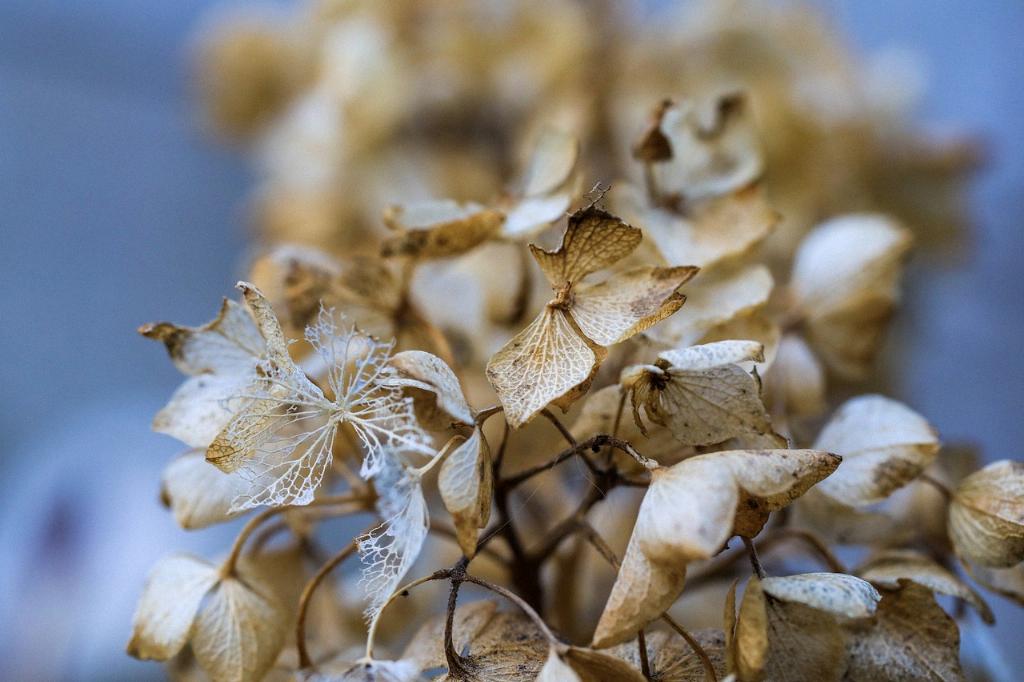Pruning hydrangeas is crucial for maintaining their health and promoting abundant blooms. When it comes to cutting back a hydrangea, timing is key. The best time to prune your hydrangea is in fall, late winter, or early spring. During this time, the plant is dormant, making it easier to assess its overall condition and carry out necessary pruning.
Identifying the Right Buds
When pruning your hydrangea, it’s important to focus on the buds. Look for fat buds along the stems, as these are where new growth will emerge. Trim the stems just above these buds to encourage healthy growth. This technique, known as a heading cut, helps to shape the plant and improve its overall appearance.
Considering Flower Heads
Hydrangeas are known for their conical-shaped flower heads, which add a beautiful touch to any garden. While pruning, consider leaving the dry, tan flower heads on the plant. Not only do they provide winter interest in your landscape, but they also protect the emerging buds from frost damage. Save the pruning of these flower heads for late winter or spring.
Pruning Techniques
There are various pruning techniques you can use to cut back a hydrangea effectively. For dead stems or weak growth, make clean cuts at the base of the stem to encourage new shoots. Remove any crossing or crowded branches to improve airflow and sunlight penetration. Additionally, you can remove old, woody stems to rejuvenate the plant.
Tools for Pruning
Having the right tools for pruning is essential to ensure clean cuts and minimize damage to the plant. Invest in a sharp pair of pruning shears for small stems and branches. For thicker stems, use loppers or a pruning saw. Remember to sterilize your tools before and after pruning to prevent the spread of diseases.
Pruning Hydrangea Varieties
It’s important to know the specific type of hydrangea you’re dealing with when pruning. Different varieties, such as mophead, lacecap, oakleaf, and panicle hydrangeas, may require slightly different pruning techniques. Research the specific care guidelines for your hydrangea variety to ensure optimal growth and blooming.
Trimming Overgrown Hydrangeas
If your hydrangea has become overgrown or unruly, don’t be afraid to trim it back significantly. Start by removing one-third of the oldest stems near the base of the plant. This will encourage new growth and help rejuvenate the hydrangea’s overall appearance. Take your time and prune gradually to avoid shock to the plant.
Monitoring Growth
After pruning your hydrangea, keep a close eye on its growth and health. Check for signs of new shoots and buds, which indicate that the plant is responding well to pruning. Water your hydrangea regularly and provide it with the necessary nutrients to support healthy growth. With proper care, your hydrangea will thrive and produce stunning blooms.
Avoiding Common Mistakes
When pruning your hydrangea, it’s easy to make mistakes that can harm the plant. Avoid cutting back hydrangeas too late in the season, as this can remove next year’s buds and impact blooming. Be cautious when trimming old wood, as this can affect the plant’s ability to flower. Take your time and follow proper pruning techniques to ensure the best results.
Seeking Professional Advice
If you’re unsure about how to prune your hydrangea or have concerns about its health, don’t hesitate to seek advice from a professional gardener or arborist. They can assess the plant’s condition, recommend the best pruning methods, and provide guidance on caring for your hydrangea throughout the year. With expert help, you can ensure your hydrangea remains healthy and beautiful.

Enjoying the Fruits of Your Labor
Pruning your hydrangea may seem daunting at first, but with the right knowledge and techniques, you can successfully cut back your plant and encourage lush growth and vibrant blooms. Take pride in caring for your hydrangea and enjoy the beauty it brings to your garden. With regular pruning and maintenance, your hydrangea will continue to thrive year after year.
